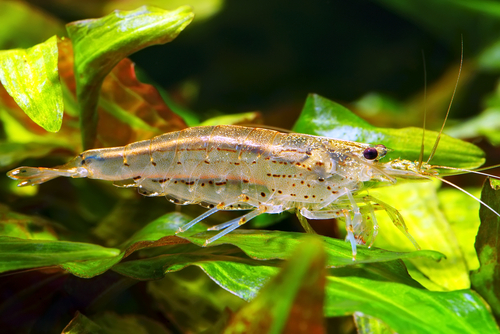Amano shrimp are a popular choice for aquarium enthusiasts due to their unique appearance and helpful nature in keeping tanks clean.
However, one of the most important aspects of caring for these shrimp is understanding their dietary requirements. Knowing what do Amano shrimp eat is crucial in ensuring their health and longevity in the aquarium.
In their natural habitat, Amano shrimp primarily feed on algae, detritus, and small invertebrates. In the aquarium, they can be fed a variety of foods including algae wafers, blanched vegetables, and high-quality shrimp pellets.
It is important to provide a balanced diet to ensure that they receive all the necessary nutrients for optimal health.
Contents
Key Takeaways on What Do Amano Shrimp Eat?
- Amano shrimp primarily feed on algae, detritus, and small invertebrates in their natural habitat.
- In the aquarium, they can be fed a variety of foods including algae wafers, blanched vegetables, and high-quality shrimp pellets.
- Providing a well-rounded diet and ensuring a clean environment are key factors in maintaining the health of Amano shrimp in the aquarium.
See these other dietary needs for your aquatic friends:
Understanding Amano Shrimp
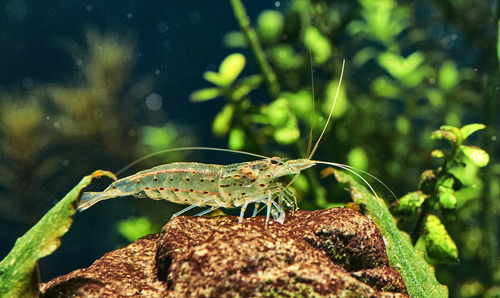
Amano shrimp, also known as Caridina multidentata or Japanese swamp shrimp, are a popular freshwater shrimp species that are native to Japan. They are highly prized by aquarium enthusiasts for their ability to keep tanks clean of algae and debris, as well as for their unique appearance.
Appearance
Amano shrimp are typically translucent in color and have a distinctive set of dots on their bodies. They are relatively small in size, with adults typically growing to be around 2 inches long.
Their tails are also quite distinctive, with a fan-like shape that helps them to swim and move around in the water.
Amano Shrimp Food
So, what do Amano shrimp eat? Well, Amano shrimp have some unique dietary needs compared to other commonly kept aquarium shrimp. As opportunistic omnivores originating from Japanese streams and rivers, Amanos thrive on a varied diet in captivity.
Unlike fully herbivorous species such as cherry shrimp, amanos require more protein in their food. That’s why it’s important to supplement plant-based foods with meatier options when feeding amano shrimp.

High-quality pellet amano shrimp food designed for scavenging shrimp can form the staple of an amano’s diet. Look for formulas containing around 35-40% protein from sources like krill, spirulina, and marine algae when choosing amano shrimp food.
Supplement the food pellets with treats like blanched vegetables, algae wafers, and even small pieces of raw, unseasoned seafood. Providing amano shrimp with diverse, nutrient-dense foods encourages vibrant coloration and helps sustain their constant grazing behavior.
Just monitor water parameters since excess food can foul water rapidly in smaller tanks. Their flexible palate lets amano shrimp thrive on varied, protein-rich foods in captivity.
Diet
Amano shrimp are primarily herbivorous, and their diet consists mainly of algae and other plant matter. They will also eat small insects and other tiny organisms that they come across in their environment.
It is important to provide them with a varied diet to ensure that they receive all of the nutrients that they need to thrive.
Lifespan
Amano shrimp have a relatively long lifespan compared to other shrimp species, with some individuals living for up to 2 years under the right conditions.
They are also quite hardy and can tolerate a wide range of water conditions, making them an ideal choice for beginner aquarium enthusiasts.
Natural Habitat and Origin

Amano shrimp, also known as Caridina multidentata, are freshwater shrimp that are native to Japan and Taiwan. They were first discovered in 1974 by Takashi Amano, a renowned aquarist and founder of the Nature Aquarium style.
In their natural habitat, amano shrimp live in freshwater rivers and streams with a moderate to fast flow. They prefer water with a neutral pH of around 7.0 and a temperature range of 68-82°F (20-28°C). Amano shrimp are also known to inhabit brackish water near river deltas.
The natural diet of amano shrimp consists of algae, biofilm, and small aquatic invertebrates. They are known to be great scavengers and will eat almost anything they can find on the bottom of the river.
In the wild, they play an important role in maintaining the balance of the ecosystem by cleaning up decaying organic matter.
In Japan, amano shrimp are highly valued for their ability to control algae growth in rice paddies. They are often used as a natural alternative to chemical pesticides.
Due to their popularity in the aquarium hobby, amano shrimp have been bred in captivity and are now widely available in pet stores around the world.
Dietary Requirements
Amano shrimp are omnivorous and require a varied diet to remain healthy. They feed on a variety of food sources, including algae, plant matter, and small particles.
One of the primary food sources for Amano shrimp is algae. They will eat many types of algae, including green spot algae and black beard algae. Amano shrimp will also eat diatoms, which are microscopic algae that grow on surfaces in the aquarium.
In addition to algae, Amano shrimp will eat plant matter such as zucchini, spinach, squash, and cucumber. They will also eat small particles of food, such as fish flakes and pellets.
To ensure that Amano shrimp receive a balanced diet, it is recommended to feed them a combination of algae wafers, supplements, and other types of food. Amano shrimp will also eat worms, such as bloodworms and brine shrimp.
It is important to note that Amano shrimp are not solely algae eaters and require a diverse diet to remain healthy. Providing a varied diet that includes both plant and animal matter will help ensure the health and longevity of Amano shrimp in the aquarium.
Aquarium Conditions
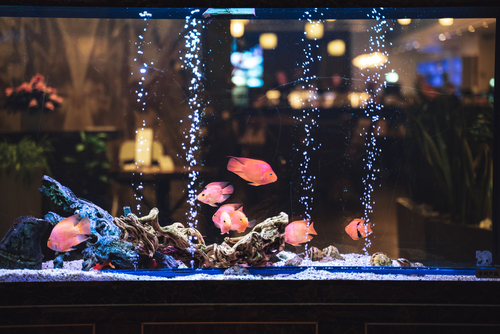
When it comes to keeping Amano shrimp, it’s essential to maintain stable and appropriate aquarium conditions. Here are some factors to consider:
1. Water Parameters
Amano shrimp prefer a pH range between 6.5 and 7.5 and a general hardness (GH) between 6 and 15 dGH. They can tolerate a wide range of water conditions, but sudden changes can be harmful. Ensure that the water parameters remain stable and within the recommended range.
2. Temperature
The ideal temperature for Amano shrimp is between 70°F and 78°F. Sudden changes in temperature can be stressful for the shrimp, so it’s essential to keep the water temperature stable.
3. Substrate
Amano shrimp enjoy a substrate that provides them with hiding spots and surfaces to graze on. A fine-grained substrate such as sand or gravel is ideal for them.
4. Lighting
Amano shrimp do not require any specific lighting requirements. However, it’s best to avoid excessive light exposure, which can cause algae growth and ammonia spikes.
5. Water Changes
Regular water changes are necessary to maintain good water quality. Amano shrimp are sensitive to high nitrate levels, so it’s crucial to keep the nitrate levels below 20 ppm.
6. Copper
Copper is toxic to Amano shrimp, so it’s essential to avoid using any copper-based medications or supplements in the aquarium.
7. KH and TDS
Amano shrimp prefer a carbonate hardness (KH) between 2 and 5 dKH and a total dissolved solids (TDS) between 150 and 300 ppm.
Amano Shrimp Care

Amano shrimp are a popular freshwater shrimp species that can make great additions to aquariums. Proper care is necessary to ensure their health and longevity in captivity. Here are some important factors to consider when caring for Amano shrimp:
1. Acclimate the Shrimp:
When introducing Amano shrimp to a new aquarium, it is important to acclimate them slowly to prevent shock.
The shrimp can be acclimated by floating the bag they came in for about 15 minutes in the aquarium water. After that, add a small amount of aquarium water to the bag and wait another 15 minutes before releasing the shrimp into the tank.
2. Provide a Balanced Diet:
Amano shrimp are omnivores and will eat a variety of foods. They enjoy algae, biofilm, and decaying plant matter, but also need protein for growth and reproduction.
A balanced diet can be achieved by feeding a combination of commercial shrimp food, blanched vegetables, and occasional live or frozen foods such as brine shrimp or bloodworms.
3. Ensure Proper Water Parameters:
Amano shrimp thrive in water with a pH between 6.5 and 7.5 and a temperature between 72 and 78 degrees Fahrenheit. They are sensitive to high levels of ammonia, nitrite, and nitrate, so regular water changes and proper filtration are important for their health.
4. Provide Adequate Minerals:
Amano shrimp require minerals such as calcium and magnesium for healthy molting and shell growth.
These minerals can be added to the aquarium water through supplements or by providing a source of calcium, such as cuttlebone or crushed coral.
5. Monitor Molting:
Amano shrimp will molt periodically as they grow. During this time, they may hide and become more vulnerable to predators. It is important to provide hiding places and avoid disturbing the shrimp during molting.
After molting, the shrimp will eat their old exoskeleton to regain lost minerals.
Breeding Amano Shrimp
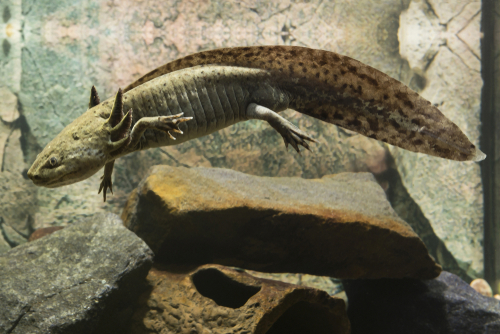
Breeding Amano shrimp can be a challenging process, but it is possible with the right conditions and care. Amano shrimp, also known as Yamato shrimp, are typically found in brackish water in their natural habitat.
Therefore, replicating these conditions in a home aquarium is crucial for successful breeding. The first step in breeding Amano shrimp is to ensure that the water parameters are appropriate.
The water should have a pH between 6.5 and 7.5, a temperature between 72 and 78 degrees Fahrenheit, and a salinity level of around 1.005. It is also important to provide plenty of hiding places and a varied diet for the shrimp.
To encourage breeding, it is recommended to introduce a male and female Amano shrimp to the aquarium. The male will typically chase the female around the tank and perform a mating dance.
Once the female is ready to lay eggs, she will deposit them in a safe location, such as on the underside of a leaf.
After the eggs are laid, it is important to remove any potential predators from the tank, such as fish or other shrimp. The eggs will hatch in approximately three weeks, and the young shrimp will need to be fed a diet of small, live foods such as baby brine shrimp or micro worms.
Breeding Amano shrimp can be a rewarding experience for experienced aquarists. With the right conditions and care, it is possible to successfully breed these fascinating creatures in a home aquarium.
Tank Mates and Predators
When it comes to tank mates, Amano shrimp are generally peaceful and can coexist with a variety of fish species. However, caution should be exercised when selecting tank mates to ensure that they do not pose a threat to the shrimp.
Avoid keeping Amano shrimp with large and aggressive fish, as they may prey on the shrimp or intimidate them into hiding.
Feeding habits of tank mates should also be taken into consideration. Some fish species may compete with the shrimp for food, which can lead to malnourishment and stress.
It is recommended to select fish species that have a different feeding pattern than the shrimp, such as bottom feeders or mid-water swimmers.
In addition to fish, Amano shrimp can also coexist with other invertebrates such as snails and dwarf shrimp.
However, it is important to note that some snail species may reproduce rapidly and compete with the shrimp for food, while some dwarf shrimp species may be aggressive towards the Amano shrimp.
As for predators, Amano shrimp have a few natural enemies in the wild, including fish and birds. In the aquarium, potential predators include large fish species and some invertebrates such as crabs and crayfish.
It is important to provide the shrimp with plenty of hiding places and cover to reduce the risk of predation.
Role in Aquarium
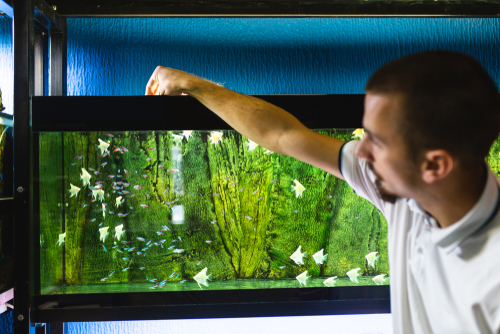
Amano shrimp play a vital role in maintaining a healthy aquarium ecosystem. They are primarily known for their cleaning abilities and are often referred to as “cleaner shrimp.”
These shrimp are highly efficient at consuming algae and other organic waste, making them an excellent addition to any aquarium.
Amano shrimp are particularly effective at controlling algae growth in aquariums. They consume a wide variety of algae, including green algae, brown algae, and even black beard algae. This makes them an ideal choice for aquarium owners who are struggling with algae problems.
In addition to their algae-eating capabilities, Amano shrimp are also effective at cleaning up waste in the aquarium. They consume uneaten fish food and other organic debris, helping to keep the aquarium clean and free of pollutants.
Amano shrimp are also beneficial for aquarium plants. They do not eat live aquarium plants, but they do consume dead or decaying plant matter. This helps to keep the aquarium clean and prevents the buildup of harmful bacteria.
Finally, Amano shrimp are scavengers and will eat almost anything they can find in the aquarium. This includes moss balls, sponge filters, and other small organisms. They are a valuable addition to any aquarium and can help to maintain a healthy and balanced ecosystem.
Amano Shrimp Health
Amano shrimp are generally hardy and easy to care for, but their health can be negatively affected by a variety of factors. In order to maintain the health and well-being of your Amano shrimp, it is important to provide them with a proper diet and a clean and stable environment.
Diet
Amano shrimp are omnivores and will eat a variety of foods. They primarily feed on algae, but they will also eat small particles of fish food, plant matter, and other organic material. Amano shrimp are particularly fond of blanched vegetables such as zucchini and spinach.
It is important to provide a balanced diet for your Amano shrimp to ensure that they receive all the necessary nutrients. A varied diet that includes a mix of algae, vegetables, and high-quality commercial shrimp food is recommended.
Medication
Amano shrimp are generally healthy and do not require medication. However, if your shrimp do become ill, it is important to identify the problem and treat it promptly. Common ailments in shrimp include bacterial infections, fungal infections, and parasites.
If medication is necessary, it is important to choose a medication that is safe for shrimp and follow the instructions carefully. Some medications can be harmful to shrimp or may not be effective in treating certain conditions.
Nitrate Levels
High levels of nitrate can be harmful to Amano shrimp. Nitrate is a byproduct of the nitrogen cycle in aquariums and can accumulate over time if not properly managed. Nitrate levels should be kept below 20 ppm, and regular water changes can help to keep nitrate levels in check.
Tank Size and Setup
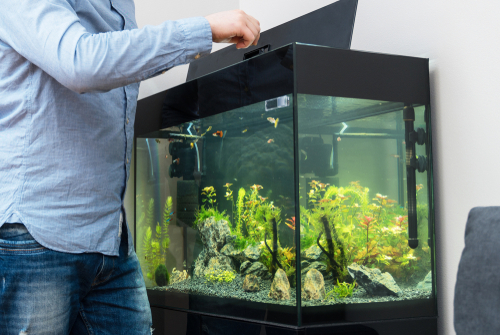
When it comes to keeping Amano shrimp, tank size is an important factor to consider. These shrimp are active creatures that require ample space to move around and explore. A general rule of thumb is to have at least 5 gallons of water per 10 Amano shrimp.
In addition to tank size, providing hiding places is also important. Amano shrimp are known to be shy creatures, and they will appreciate having places to retreat to when they feel threatened. This can include plants, rocks, or other decorations that provide cover.
When setting up the tank, it’s important to ensure that the water parameters are suitable for Amano shrimp.
They prefer slightly alkaline water with a pH range of 7.0-8.0 and a temperature range of 72-78°F. It’s also important to cycle the tank before adding any shrimp to ensure that the water is free of harmful toxins.
Conclusion
Amano shrimp are a popular choice for aquarium enthusiasts due to their beneficial nature in tank cleaning and their unique appearance. Providing proper care and diet is key to their health and longevity. The best Amano shrimp food is algae wafers but they also eat blanched vegetables and high-quality sinking pellets.
Water parameters should be monitored to maintain a slightly alkaline pH of around 7.0-8.0 and temperature from 72-78°F. Regular water changes keep nitrates low.
With optimal conditions, Amano shrimp can live up to 2-3 years in a home aquarium. Proper acclimation and close attention to molting cycles, mineral supplementation, tank setup, potential illness treatment, and other care guidelines outlined here will help ensure success in keeping Amano shrimp.
Their effectiveness at cleaning algae and waste makes them a valuable addition to freshwater community tanks. By understanding their dietary and environmental needs and providing excellent care, aquarists can enjoy their beauty and helpful nature.
Frequently Asked Questions
What are the ideal water parameters for feeding Amano shrimp?
Amano shrimp thrive in water that is slightly alkaline with a pH range of 7.0-8.0. The ideal temperature range for them is between 72-78°F. It’s best to keep the water clean and free of harmful chemicals.
What is the recommended feeding schedule for Amano shrimp?
Amano shrimp are primarily algae eaters and can survive on a diet of algae alone. However, it’s important to supplement their diet with other foods like blanched vegetables, sinking pellets, and live or frozen foods.
Feed them once or twice a day, giving them only what they can eat in a few minutes.
What types of food can be given to Amano shrimp besides algae?
Amano shrimp can also be fed blanched vegetables like spinach, zucchini, and carrots. Sinking pellets and flakes formulated specifically for shrimp are also good options. They can also be given live or frozen foods like brine shrimp, daphnia, and bloodworms.
How many Amano shrimp should be kept together in a tank?
Amano shrimp are social creatures and thrive in groups. It’s recommended to keep at least 5-6 Amano shrimp together in a tank to ensure they feel comfortable and safe.
What are some tank mates that can coexist with Amano shrimp?
Amano shrimp are peaceful and can coexist with other peaceful fish and invertebrates. Some good tank mates include small tetras, rasboras, guppies, and snails.
What do shrimp eat?
Shrimp are omnivores, meaning they eat both plant and animal matter. In the wild, shrimp feed on algae, aquatic plants, and small creatures like worms, insect larvae, copepods, and even each other!
Common foods you can feed pet shrimp include blanched vegetables, algae wafers, shrimp pellets, and calcium-rich foods like spinach and kale to support molting.
What eats Amano shrimp?
Though larger than cherry or ghost shrimp, Amanos can still fall prey to a variety of fish. Larger species like goldfish, cichlids, loaches, bettas, gouramis, and catfish will eat adult Amanos, while smaller tetras, rasboras, and danios may go after babies.
That’s why it’s best to house Amano shrimp either on their own or with small, non-aggressive fish. Avoid known shrimp eaters. Also watch for cannibalism, as larger Amanos will eat smaller ones!
What is the average lifespan of Amano shrimp in captivity?
Amano shrimp can live up to 2-3 years in captivity if they are provided with optimal living conditions and a well-balanced diet.
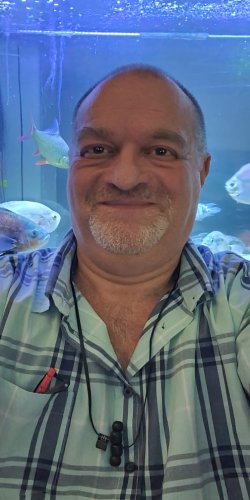
Veteran fish keeper and keen hobbyist with a serious case of MTS. My midlife crisis was the establishment of a fish room, much to my wife’s horror. Little does she know it could be worse!!


